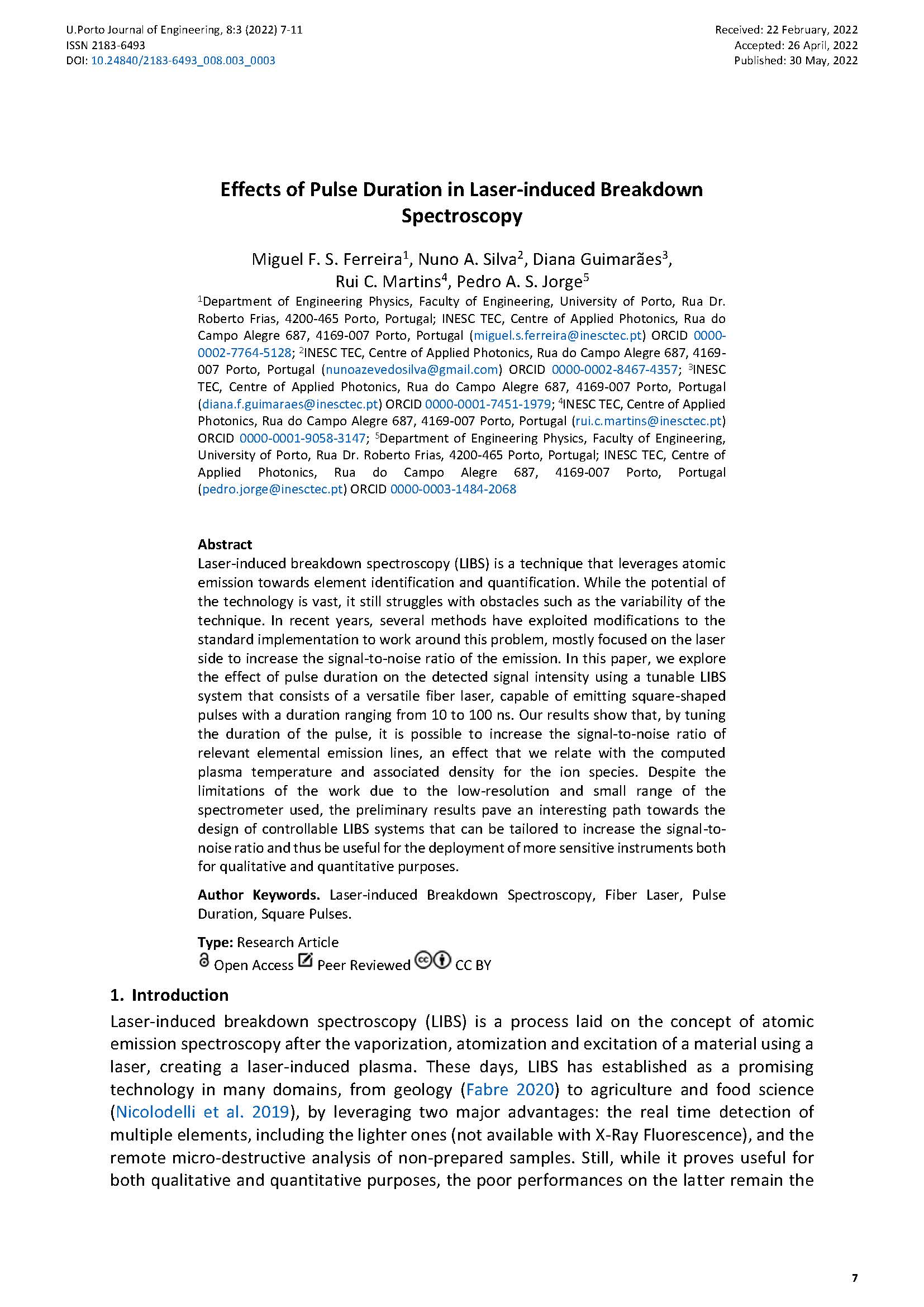Effects of Pulse Duration in Laser-induced Breakdown Spectroscopy
Main Article Content
Abstract
Laser-induced breakdown spectroscopy (LIBS) is a technique that leverages atomic emission towards element identification and quantification. While the potential of the technology is vast, it still struggles with obstacles such as the variability of the technique. In recent years, several methods have exploited modifications to the standard implementation to work around this problem, mostly focused on the laser side to increase the signal-to-noise ratio of the emission. In this paper, we explore the effect of pulse duration on the detected signal intensity using a tunable LIBS system that consists of a versatile fiber laser, capable of emitting square-shaped pulses with a duration ranging from 10 to 100 ns. Our results show that, by tuning the duration of the pulse, it is possible to increase the signal-to-noise ratio of relevant elemental emission lines, an effect that we relate with the computed plasma temperature and associated density for the ion species. Despite the limitations of the work due to the low-resolution and small range of the spectrometer used, the preliminary results pave an interesting path towards the design of controllable LIBS systems that can be tailored to increase the signal-to-noise ratio and thus be useful for the deployment of more sensitive instruments both for qualitative and quantitative purposes.
Downloads
Article Details

This work is licensed under a Creative Commons Attribution 4.0 International License.
Authors who publish with this journal agree to the following terms:
- Authors retain copyright and grant the journal right of first publication with the work simultaneously licensed under a Creative Commons Attribution License that allows others to share the work with an acknowledgement of the work's authorship and initial publication in this journal.
- Authors grant the journal the rights to provide the article in all forms and media so the article can be used on the latest technology even after publication and ensure its long-term preservation.
- Authors are able to enter into separate, additional contractual arrangements for the non-exclusive distribution of the journal's published version of the work (e.g., post it to an institutional repository or publish it in a book), with an acknowledgement of its initial publication in this journal.
- Authors are permitted and encouraged to post their work online (e.g., in institutional repositories or on their website) prior to and during the submission process, as it can lead to productive exchanges, as well as earlier and greater citation of published work (See The Effect of Open Access).

